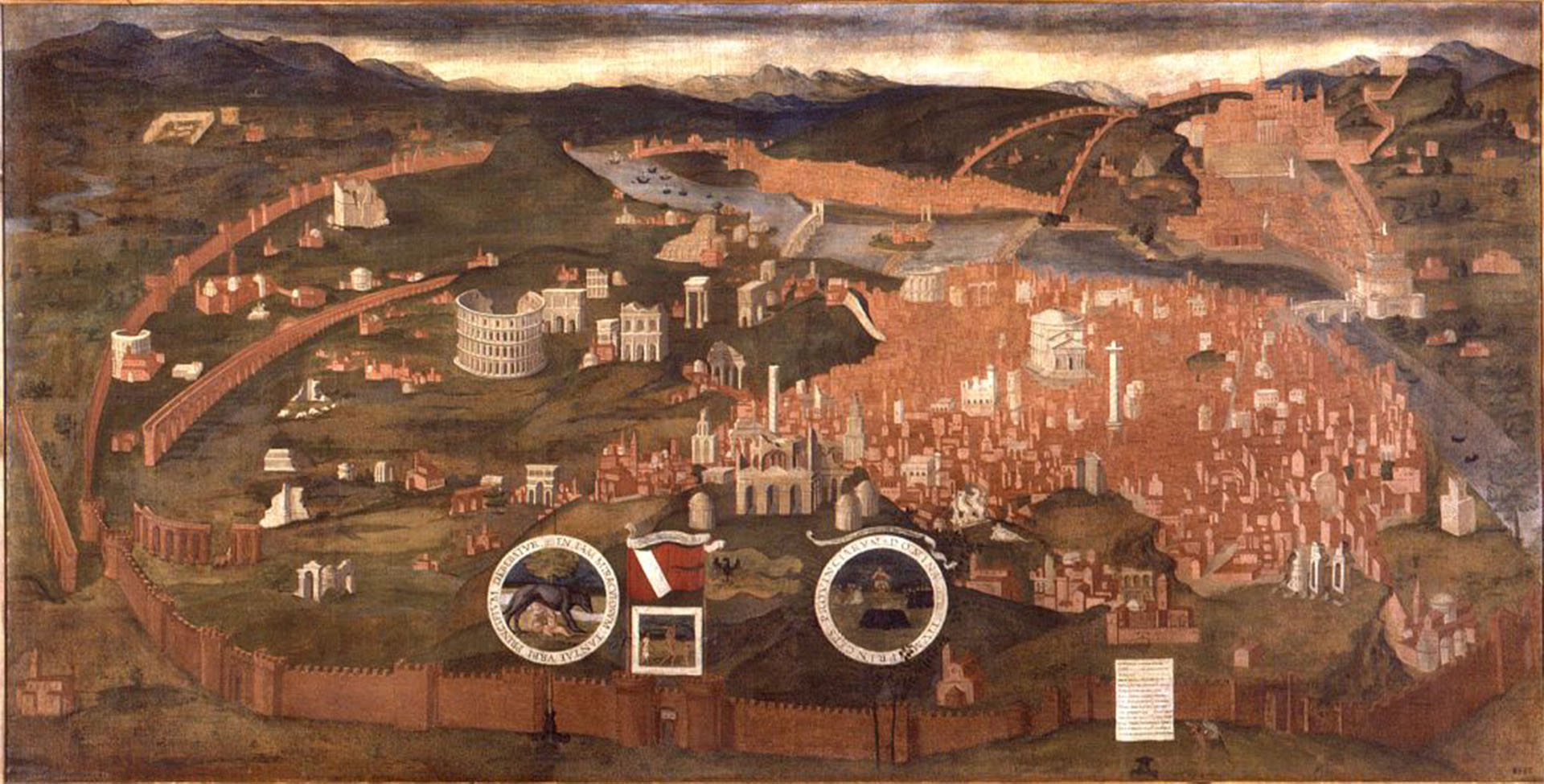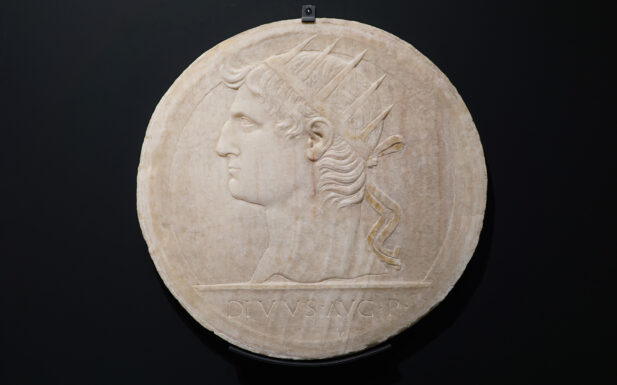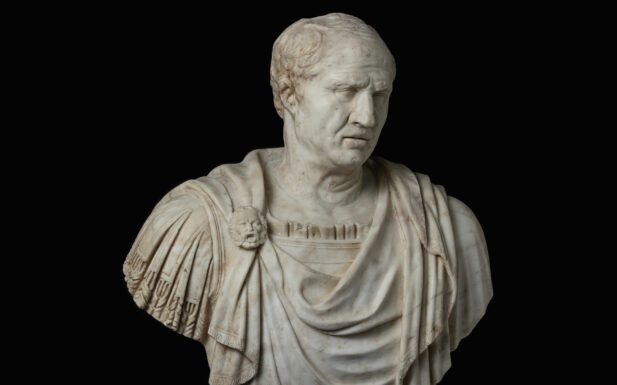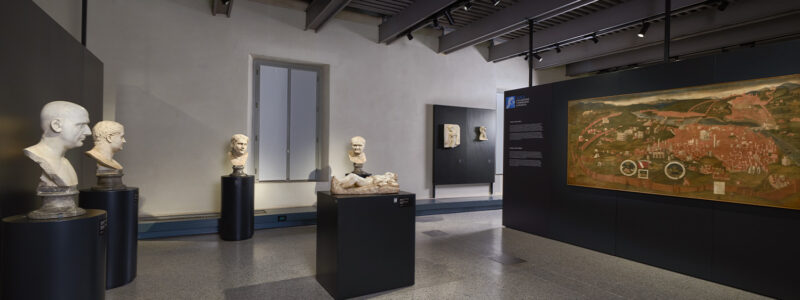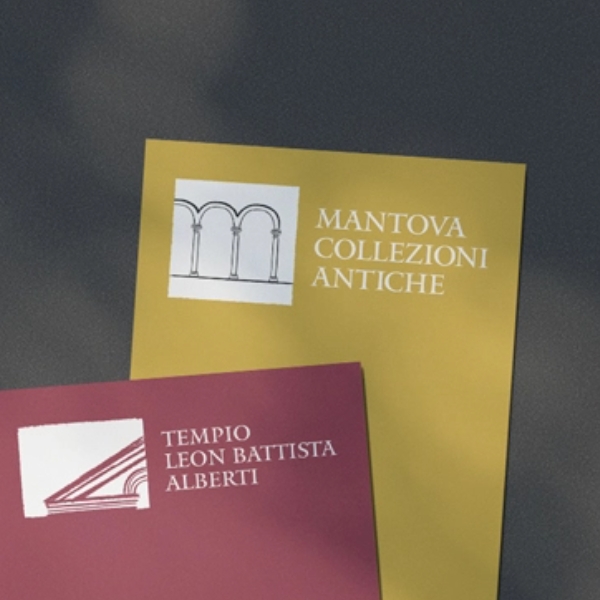This is a rare and emblematic canvas in the history of the documentation of Italian cities; it shows the city of Rome in the early 16th century through an aerial, objective and symbolic view.
Within the walls are numerous buildings, ancient and modern, and dense constructions highlighted by the red colour of the brick.
On the outside, large deserted areas with dense vegetation are depicted.
The artist, unknown to this day despite extensive research on the work, depicts both ancient monuments and new architectural projects related to the urban planning of Pope Nicholas V, such as St. Peter’s Square and the Capitol.
It is a faithful representation of the ruins and ancient buildings, among which one can recognise, within the Aurelian walls: the Colosseum, the Pantheon, the Antonine column and the Trajan column.
On the main monuments there are inscriptions that help read the history of the buildings and date the work: St. Peter’s Basilica predates Bramante’s intervention in 1506, on the Sant’Angelo bridge there are two statues of St. Peter and St. Paul placed there in 1534 and an inscription indicates the moving of the Marcus Aurelius from the Lateran to the Capitoline Hill, based on a design by Michelangelo. This precious view is based on a model from the late 15th century, after the Sack of Rome in 1527. In the foreground, from left to right, we read the foundation and power of the eternal city: the tondo with the Capitoline she-wolf and Romulus and Remus, in the centre the banner with the imperial eagle, the inscription SPQR Senatus Populus Quirites Romani and the Escape of Aeneas from Troy, and to the right another tondo between the palm tree, symbol of victory, and the laurel, symbol of virtue, with the personification of Roman rule.
tempera on canvas
c. 1530

